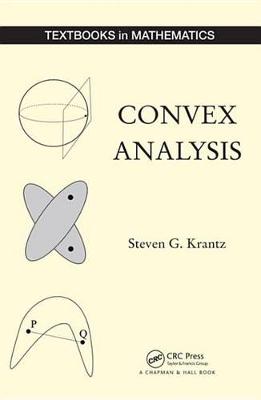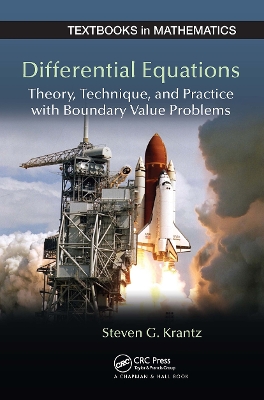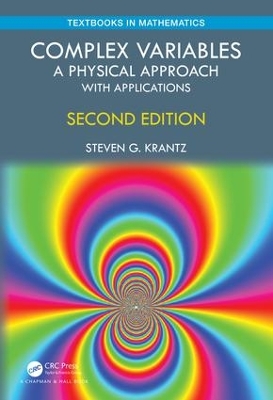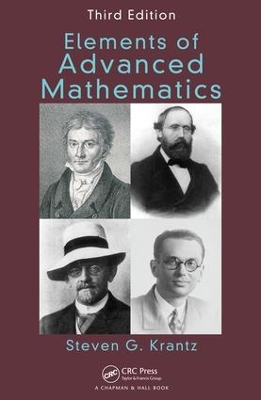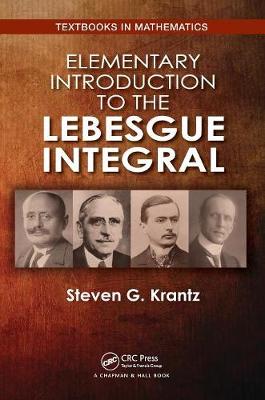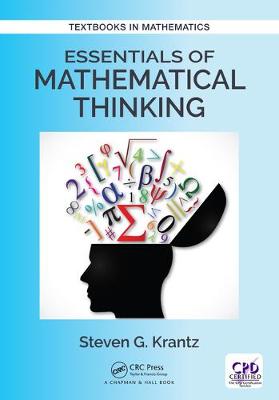Textbooks in Mathematics
10 total works
The first three editions of this popular textbook attracted
a loyal readership and widespread use. Students find the book to be concise, accessible, and
complete. Instructors find the book to be clear, authoritative, and dependable.
The goal of this new edition is to make real analysis relevant and accessible
to a broad audience of students with diverse backgrounds. Real analysis
is a basic tool for all mathematical scientists, ranging from mathematicians to physicists to
engineers to researchers in the medical profession. This text aims to be the
generational touchstone for the subject and the go-to text for developing young
scientists.
In this new edition we endeavor to make the book accessible to a broader
audience. This edition includes more explanation, more elementary examples,
and the author stepladders the exercises. Figures are updated and clarified. We make
the sections more concise, and omit overly technical details.
We have updated and augmented the multivariable material in order to bring out
the geometric nature of the topic. The figures are thus enhanced and fleshed out.
Features
- A renewed enthusiasm for the topic comes through in a revised presentation
- A new organization removes some advanced topics and retains related ones
- Exercises are more tiered, offering a more accessible course
- Key sections are revised for more brevity
The idea of complex numbers dates back at least 300 years—to Gauss and Euler, among others. Today complex analysis is a central part of modern analytical thinking. It is used in engineering, physics, mathematics, astrophysics, and many other fields. It provides powerful tools for doing mathematical analysis, and often yields pleasing and unanticipated answers.
This book makes the subject of complex analysis accessible to a broad audience. The complex numbers are a somewhat mysterious number system that seems to come out of the blue. It is important for students to see that this is really a very concrete set of objects that has very concrete and meaningful applications.
Features:
- This new edition is a substantial rewrite, focusing on the accessibility, applied, and visual aspect of complex analysis
- This book has an exceptionally large number of examples and a large number of figures.
- The topic is presented as a natural outgrowth of the calculus. It is not a new language, or a new way of thinking.
- Incisive applications appear throughout the book.
- Partial differential equations are used as a unifying theme.
For many years, this classroom-tested, best-selling text has guided mathematics students to more advanced studies in topology, abstract algebra, and real analysis. Elements of Advanced Mathematics, Third Edition retains the content and character of previous editions while making the material more up-to-date and significant.
This third edition adds four new chapters on point-set topology, theoretical computer science, the P/NP problem, and zero-knowledge proofs and RSA encryption. The topology chapter builds on the existing real analysis material. The computer science chapters connect basic set theory and logic with current hot topics in the technology sector. Presenting ideas at the cutting edge of modern cryptography and security analysis, the cryptography chapter shows students how mathematics is used in the real world and gives them the impetus for further exploration. This edition also includes more exercises sets in each chapter, expanded treatment of proofs, and new proof techniques.
Continuing to bridge computationally oriented mathematics with more theoretically based mathematics, this text provides a path for students to understand the rigor, axiomatics, set theory, and proofs of mathematics. It gives them the background, tools, and skills needed in more advanced courses.
A Readable yet Rigorous Approach to an Essential Part of Mathematical Thinking
Back by popular demand, Real Analysis and Foundations, Third Edition bridges the gap between classic theoretical texts and less rigorous ones, providing a smooth transition from logic and proofs to real analysis. Along with the basic material, the text covers Riemann-Stieltjes integrals, Fourier analysis, metric spaces and applications, and differential equations.
New to the Third Edition
Offering a more streamlined presentation, this edition moves elementary number systems and set theory and logic to appendices and removes the material on wavelet theory, measure theory, differential forms, and the method of characteristics. It also adds a chapter on normed linear spaces and includes more examples and varying levels of exercises.
Extensive Examples and Thorough Explanations Cultivate an In-Depth Understanding
This best-selling book continues to give students a solid foundation in mathematical analysis and its applications. It prepares them for further exploration of measure theory, functional analysis, harmonic analysis, and beyond.
Elementary Introduction to the Lebesgue Integral is not just an excellent primer of the Lebesgue integral for undergraduate students but a valuable tool for tomorrow’s mathematicians. Since the early twentieth century, the Lebesgue integral has been a mainstay of mathematical analysis because of its important properties with respect to limits. For this reason, it is vital that mathematical students properly understand the complexities of the Lebesgue integral. However, most texts about the subject are geared towards graduate students, which makes it a challenge for instructors to properly teach and for less advanced students to learn.
Ensuring that the subject is accessible for all readers, the author presents the text in a clear and concrete manner which allows readers to focus on the real line. This is important because Lebesgue integral can be challenging to understand when compared to more widely used integrals like the Riemann integral. The author also includes in the textbook abundant examples and exercises to help explain the topic. Other topics explored in greater detail are abstract measure spaces and product measures, which are treated concretely.
Features:
- Comprehensibly written introduction to the Lebesgue integral for undergraduate students
- Includes many examples, figures and exercises
- Features a Table of Notation and Glossary to aid readers
- Solutions to selected exercises
Essentials of Mathematical Thinking addresses the growing need to better comprehend mathematics today. Increasingly, our world is driven by mathematics in all aspects of life. The book is an excellent introduction to the world of mathematics for students not majoring in mathematical studies.
The author has written this book in an enticing, rich manner that will engage students and introduce new paradigms of thought. Careful readers will develop critical thinking skills which will help them compete in today’s world.
The book explains:
- What goes behind a Google search algorithm
- How to calculate the odds in a lottery
- The value of Big Data
- How the nefarious Ponzi scheme operates
Instructors will treasure the book for its ability to make the field of mathematics more accessible and alluring with relevant topics and helpful graphics. The author also encourages readers to see the beauty of mathematics and how it relates to their lives in meaningful ways.
Brings Readers Up to Speed in This Important and Rapidly Growing Area
Supported by many examples in mathematics, physics, economics, engineering, and other disciplines, Essentials of Topology with Applications provides a clear, insightful, and thorough introduction to the basics of modern topology. It presents the traditional concepts of topological space, open and closed sets, separation axioms, and more, along with applications of the ideas in Morse, manifold, homotopy, and homology theories.
After discussing the key ideas of topology, the author examines the more advanced topics of algebraic topology and manifold theory. He also explores meaningful applications in a number of areas, including the traveling salesman problem, digital imaging, mathematical economics, and dynamical systems. The appendices offer background material on logic, set theory, the properties of real numbers, the axiom of choice, and basic algebraic structures.
Taking a fresh and accessible approach to a venerable subject, this text provides excellent representations of topological ideas. It forms the foundation for further mathematical study in real analysis, abstract algebra, and beyond.
